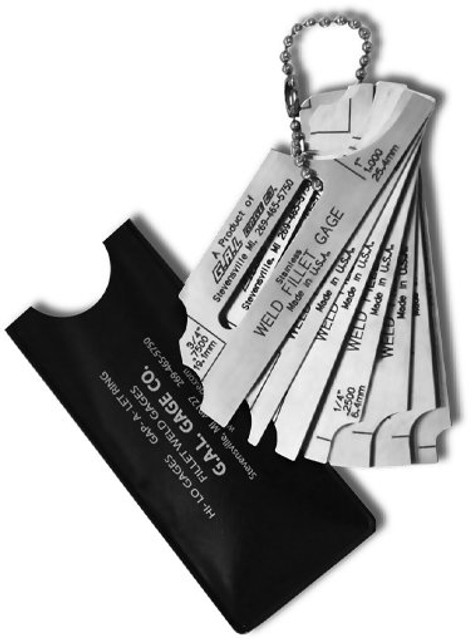Gauge Fillet Weld Basics: Finest Practices and Common Mistakes
Fillet Weld Design Techniques: Enhancing Joint Efficiency and Aesthetics for Structural Integrity
In the realm of architectural design and manufacture, the relevance of fillet weld style methods can not be overemphasized. These strategies play a critical role in not only guaranteeing the efficiency and structural stability of joints however additionally in boosting the total aesthetics of the finished product. By diligently thinking about variables such as weld profile optimization, material option, joint prep work methods, welding procedure efficiency, and aesthetic enhancement engineers, makers and techniques can attain an unified balance between capability and look in their welded frameworks. The combination of these components not only leads to durable joints but additionally boosts the visual allure of the end product.
Weld Profile Optimization


Achieving an ideal weld account involves a thorough consideration of factors such as material density, joint setup, welding placement, and wanted welding speed. Additionally, the option of ideal welding parameters, such as voltage, current, and travel speed, is essential in controlling the form and measurements of the fillet weld. Utilizing innovative welding methods, such as pulse welding or robotic welding, can better fine-tune the weld profile to fulfill certain layout requirements and quality requirements.
Essentially, weld profile optimization is a basic aspect of fillet weld style that directly affects the total efficiency and reliability of bonded joints in architectural applications.
Product Option Factors To Consider
When taking into consideration product selection for fillet weld layout, the compatibility of the base steels is an essential variable affecting the structural honesty of the joint. It is necessary to pick products that not only weld with each other properly yet likewise have similar mechanical buildings to make sure the tons is evenly dispersed in between the base and the weld steels. Welding products with significantly various buildings can bring about problems such as tension concentrations, premature joint failing, or splitting.
In addition, the setting in which the welded structure will operate must be considered when choosing materials. Aspects like corrosion resistance, temperature fluctuations, and exposure to chemicals can all affect the durability and performance of the weld joint. By choosing materials that are appropriate for the designated application and atmosphere, the general longevity and reliability of the bonded joint can be considerably improved.
For that website link reason, detailed consideration of product compatibility and ecological factors is extremely important in making certain the weld joint's stamina, toughness, and total architectural stability.

Joint Preparation Methods
Thinking about the crucial function product selection plays in guaranteeing the structural stability of fillet weld joints, it is vital to execute precise joint preparation techniques that maximize the link in between the base metals. Joint prep work is an essential action that directly influences the high quality and strength of the weld. One essential strategy is the cleansing of base metals to eliminate any kind of contaminants like corrosion, oil, or paint that can compromise the weld's stability. This can be attained via methods such as grinding, cable cleaning, or chemical cleaning.
Furthermore, tack welding the elements in place prior to the last weld assists maintain look at this site alignment and decreases distortion throughout the welding process. By carefully following these joint preparation strategies, welders can check out this site boost the general performance and aesthetics of fillet weld joints while ensuring architectural strength.
Welding Process Performance
Effective welding processes are crucial for attaining optimal performance and high quality in fillet weld fabrication. One vital element of enhancing welding procedure efficiency is picking the suitable welding strategy. Elements such as product type, joint layout, and welding setting must be very carefully considered to establish the most ideal method. Procedures like gas metal arc welding (GMAW) and flux-cored arc welding (FCAW) are generally utilized for fillet welds due to their convenience and speed.
Routine calibration of welding machines, examination of consumables, and maintenance of welding lanterns can stop downtime and revamp, ultimately conserving time and sources. Well-trained welders are a lot more proficient at readjusting parameters, fixing issues, and keeping consistent weld high quality.
Aesthetic Improvement Methods
To enhance the top quality of fillet weld construction, implementing visual enhancement techniques can play an essential function in making certain accuracy and accuracy throughout the welding process. Visual aids such as weld dimension gauges and magnifying lenses can aid in analyzing weld profiles and measurements precisely. By incorporating these visual enhancement methods right into the welding procedure, welders can achieve not only structurally audio fillet welds however likewise aesthetically appealing outcomes that meet industry criteria.

Conclusion
Finally, maximizing fillet weld style includes mindful factor to consider of weld account, product choice, joint prep work, welding procedure efficiency, and aesthetic improvement approaches. By executing these strategies, architectural stability can be boosted while also accomplishing aesthetic allure. It is crucial to focus on both efficiency and aesthetic appeals in fillet weld design to guarantee the overall quality and resilience of the joint.
By diligently taking into consideration variables such as weld profile optimization, material selection, joint preparation techniques, welding process performance, and aesthetic enhancement producers, engineers and methods can accomplish a harmonious equilibrium between performance and appearance in their welded frameworks.In the realm of fillet weld layout, maximizing the weld account plays a crucial duty in making certain architectural integrity and efficiency. The weld profile, which includes the size and form of the weld cross-section, straight influences the distribution of stress and load-bearing ability within the joint. It is necessary to choose materials that not only bonded with each other efficiently but likewise have similar mechanical homes to ensure the tons is evenly distributed in between the base and the weld steels - Gauge Fillet Weld.In final thought, enhancing fillet weld design includes mindful consideration of weld account, material choice, joint prep work, welding process effectiveness, and aesthetic enhancement methods